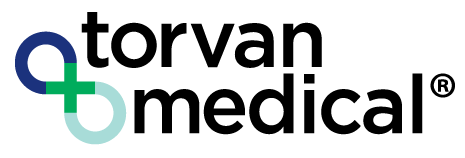Introduction
Healthcare costs across North America continue to rise at unsustainable rates. For hospitals, ambulatory surgical centers (ASCs), and healthcare networks, this translates into increased pressure on operational budgets, limited capital for new technology, and rising expectations to deliver high-quality care with fewer resources. The question on every administrator’s mind is clear: How can we reduce healthcare costs without compromising safety or service?
While long-term reforms and payer models are still evolving, there are immediate, impactful strategies that healthcare facilities can implement today. These strategies center around three pillars: operational efficiency, smart capital planning, and sustainable innovations. In all cases, medical device reprocessing (MDR) is emerging as a high-impact area.
This blog explores eight practical methods for cost reduction. These are grounded in clinical operations and supported by Torvan Medical’s expertise in equipment innovation, modular design, and sterile processing environments.
Why Are Healthcare Costs So High?
Understanding the root causes of rising costs is essential for identifying leverage points. Among the most common cost drivers:
1. An Aging Population & Chronic Illness
Older populations require more frequent interventions, many involving surgical or diagnostic procedures. Managing frequent screening procedures and chronic illness or often lead to recurring instrument use and frequent reprocessing cycles, which increases both labor and equipment wear.
2. Staffing Shortages & Burnout
Labor shortages, especially among sterile processing technicians and infection control staff, drive up overtime costs and increase turnover. When reprocessing departments are understaffed, corners may be cut, increasing the risk of failed sterilization or contaminated instruments.
3. Cost of Surgical Equipment & Instrument Sterilization
High-value instruments, particularly those with lumens or delicate parts, are expensive to clean, maintain, and replace. When reprocessing errors occur, the cost is compounded through procedural delays, replacements, or post-op infections.
4. Redundant or Outdated Reprocessing & Storage Workflows
Many facilities still rely on legacy reprocessing systems not built for modern instrument complexity or surgical volume. Non-automated flushing, drying, and storage workflows may result in bottlenecks, cross-contamination risks, or damaged instruments.
Reprocessing-related failures are a frequent cause of healthcare cost escalation. But they can be prevented.
8 Proven Ways to Reduce Healthcare Costs
Rather than relying solely on policy or funding changes, hospitals can take matters into their own hands by targeting high-impact operational areas. The following eight strategies can help reduce healthcare costs, with clear applications in sterile processing, surgical suite readiness, and infection prevention.
1. Standardize & Automate Equipment Reprocessing Workflows
Manual reprocessing tasks, especially those involving cleaning and flushing, are often inconsistent. Variation in technician technique, timing, or equipment setup can introduce inefficiencies and increase the risk of inadequate cleaning.
Inconsistent cleaning may lead to repeated cycles, instrument damage, and even case cancellations. Over time, these inconsistencies drain labor resources, increase wear on instruments, and risk patient harm.
Cost-saving impact:
- Reduces reprocessing time per instrument set
- Minimizes staff burnout and training complexity
- Extends the lifespan of surgical equipment
- Prevents regulatory penalties or infection events
Featured Solution: Reprocessing sinks and the TPS Flushing Pump from Torvan Medical are designed to deliver consistent, repeatable, validated workflows to help facilities standardize flushing and rinsing procedures. By automating key steps, these tools help reduce dependency the variability of operator performance and help ensure compliance with AMI standards.
2. Optimize Instrument Cleaning to Reduce Reprocessing Failures
Instruments with lumens, hinges, or articulating components are especially prone to retention of biological debris. Manual flushing is often unreliable, and visual inspection alone may be insufficient. Reprocessing failures can result in contaminated instruments being used in surgery, potentially leading to infection, reputation damage or litigation.
Several studies link instrument contamination or retained debris to surgical site infections (SSI’s). For example, the Unseen Threats: Lumens 2.0 study found that SSIs have been associated with instruments containing residual tissue or soil, which compromise sterilization effectiveness. These infections not only harm patients but lead to significant costs related to readmissions, extended hospital stays, antibiotic therapy, and legal risk.
Cost-saving impact:
- Mitigates surgical site infections
- Reduces need for re-cleaning or re-sterilization
- Avoids repeat procedures and associated anesthesia time
- Supports regulatory compliance and accreditation readiness
Featured Solution: The TPS Flushing Pump is designed to deliver timed, pressure-controlled flushing specifically for lumened devices, helping ensure consistent results across shifts and staff. It can be paired with integrated data logging for traceability, helping infection prevention teams document compliance.
3. Invest in Durable, Modular Medical Equipment
Frequent replacement of cabinetry, drying cabinets, or reprocessing stations adds up, especially when infrastructure needs to be overhauled every time standards change. Modular equipment allows for incremental upgrades and component swaps without replacing entire systems.
A durable, modular approach reduces lifecycle costs, supports phased renovations, and prevents costly downtime during transitions.
Cost-saving impact:
- Lowers long-term capital replacement needs
- Reduces downtime during facility expansions or redesigns
- Supports quick adaptation to new regulatory standards
Featured Solution: EndoCab™ medical storage cabinets are designed with futureproofing in mind. Facilities can add airflow enhancements, lighting, or storage upgrades without full cabinet replacement.
4. Improve Space Utilization with Pre-Design Tools
Sterile processing areas often suffer from outdated layouts that no longer match current surgical volume or workflows. Redesigning without a clear plan leads to costly missteps, retrofits, and unused square footage.
Poor space planning not only reduces throughput but also creates ergonomic hazards and inefficiencies – slowing down reprocessing cycles and increasing staff fatigue.
Cost-saving impact:
- Maximizes use of existing space
- Improves staff efficiency and throughput
- Avoids costly post-construction revisions
Featured Solution: Torvan Medical’s workspace planning expertise helps administrators visualize, iterate, and validate SPD layouts before committing to buildouts. Integrated with modular equipment, it ensures right-sized configurations that support both current and future needs.
5. Focus on Ergonomics to Reduce Workplace Injury Costs
Sterile processing involves repetitive motions, heavy lifting, and long hours standing at fixed-height workstations. Improper ergonomics contribute to repetitive strain injuries (RSIs), which are a major source of absenteeism and long-term disability claims in healthcare environments.
Injuries cost more than just time off. They reduce team morale, increase turnover, and can result in regulatory fines if OSHA or provincial standards aren’t met.
Cost-saving impact:
- Reduces insurance premiums and injury claims
- Improves productivity and retention
- Promotes long-term workforce sustainability
Featured Solution: Height-adjustable reprocessing sinks and workstations from Torvan Medical adapt to each staff member’s ideal working height. This minimizes strain and supports a safer work environment.
6. Reduce Single-Use Waste (Where Safe & Feasible)
Disposables are often chosen for their convenience, but come with recurring purchasing, shipping, and waste disposal costs. In many cases, reusable instruments, when cleaned properly, are just as safe and far more cost-effective.
Sustainability is increasingly linked to cost control, particularly in systems with value-based purchasing models or green procurement mandates.
Cost-saving impact:
- Reduces annual spend on disposables
- Increases lifespan of reusable instruments
- Lowers landfill and regulated waste fees
Featured Solution: The Torvan AquaBrush System helps hospitals safely clean reusable surgical tools, even those with complex geometries so they can be used longer without risk.
7. Streamline Endoscope Reprocessing & Storage
Endoscopes are among the most expensive and sensitive instruments in a hospital’s inventory. Improper storage, inadequate drying, or microbial contamination can cost thousands per scope in damage or lost use, and also increase patient risks.
A 2022 analysis found that failed endoscope reprocessing contributes significantly to hospital-acquired infection (HAI) costs – up to $30,000 per event in some cases.1
Cost-saving impact:
- Prevents scope damage and biofilm formation
- Reduces out-of-service scope time
- Supports infection control documentation
Featured Solution: EndoCab™ medical storage cabinets support HEPA-filtered drying, active channel purging, and secure scope storage. This helps ensure that scopes are ready for use with minimal risk of contamination or damage. Custom configurations can scale with procedural volume and specialty needs.
1 The Burden of Health Care Utilization
8. Reduce Turnaround Times for Equipment Delivery & Setup
Even with capital approval in hand, delays in equipment delivery, installation, or certification can stall entire projects, leading to idle ORs, rescheduled procedures, and lost revenue.
Operational readiness depends on agile vendors who can deliver equipment, training, and support on time and on spec.
Cost-saving impact:
- Prevents costly construction change orders
- Avoids revenue loss from delayed care
- Supports faster project ROI
Featured Solution: Modular manufacturing facilitates faster build times, flexible on-site assembly, and reduced installation complexity. This can help hospitals get operational faster, with less disruption.
Conclusion
How can we reduce healthcare costs in a way that aligns with patient safety, staff wellbeing, and operational sustainability?
The answer lies in smarter decisions around equipment, reprocessing workflows, and design-first thinking. Torvan Medical supports healthcare facilities in making those decisions easier, by offering durable, ergonomic, and modular solutions tailored for sterile processing environments.
When you combine automation, standardization, and intelligent design, cost savings follow – not just in dollars, but in time, outcomes, and staff satisfaction.
Ready to Reduce Costs?
Contact Torvan Medical or call toll-free 1-888-832-0355 to speak with a product specialist. Let’s build healthcare spaces that work better – and cost less.


